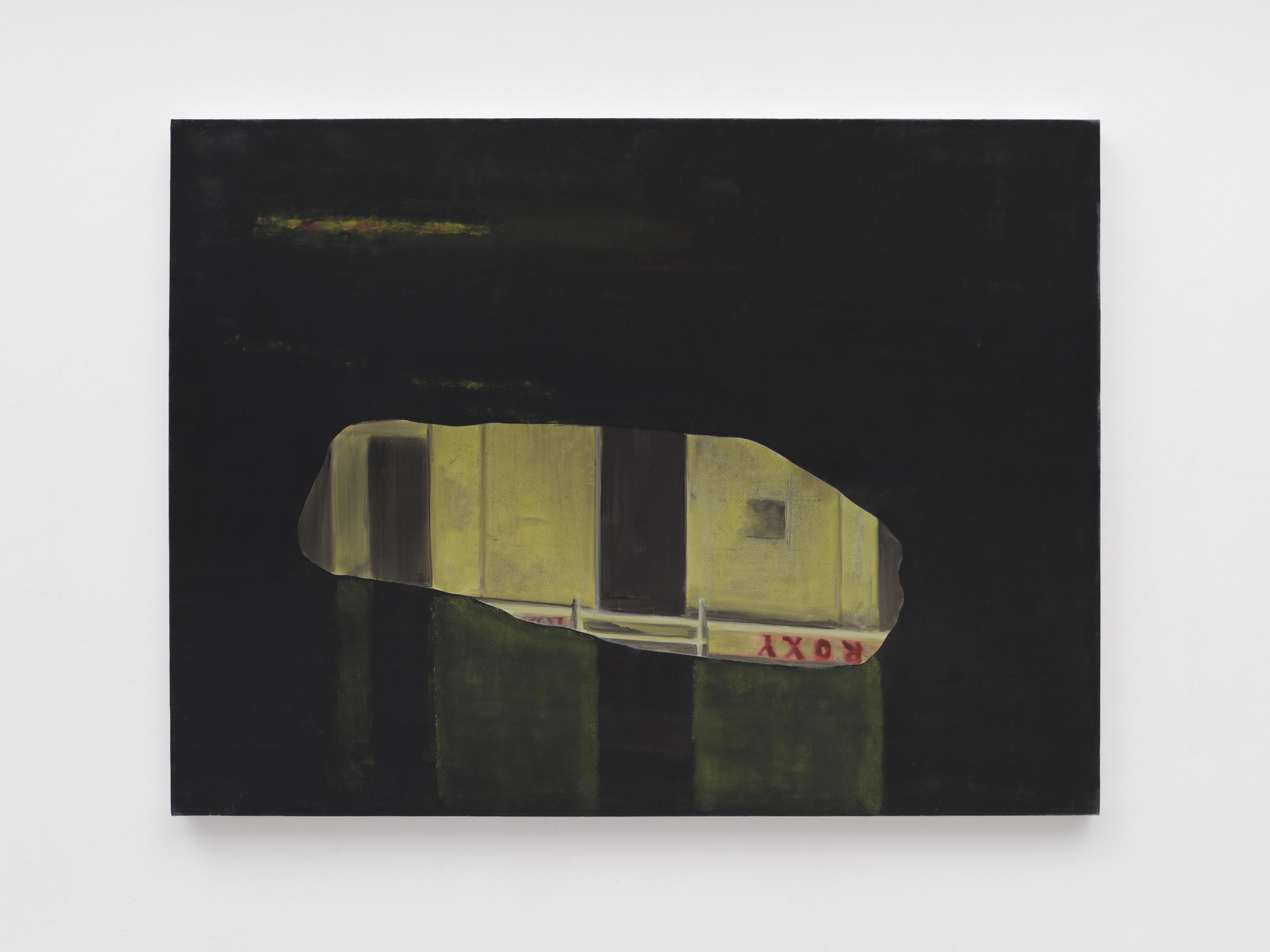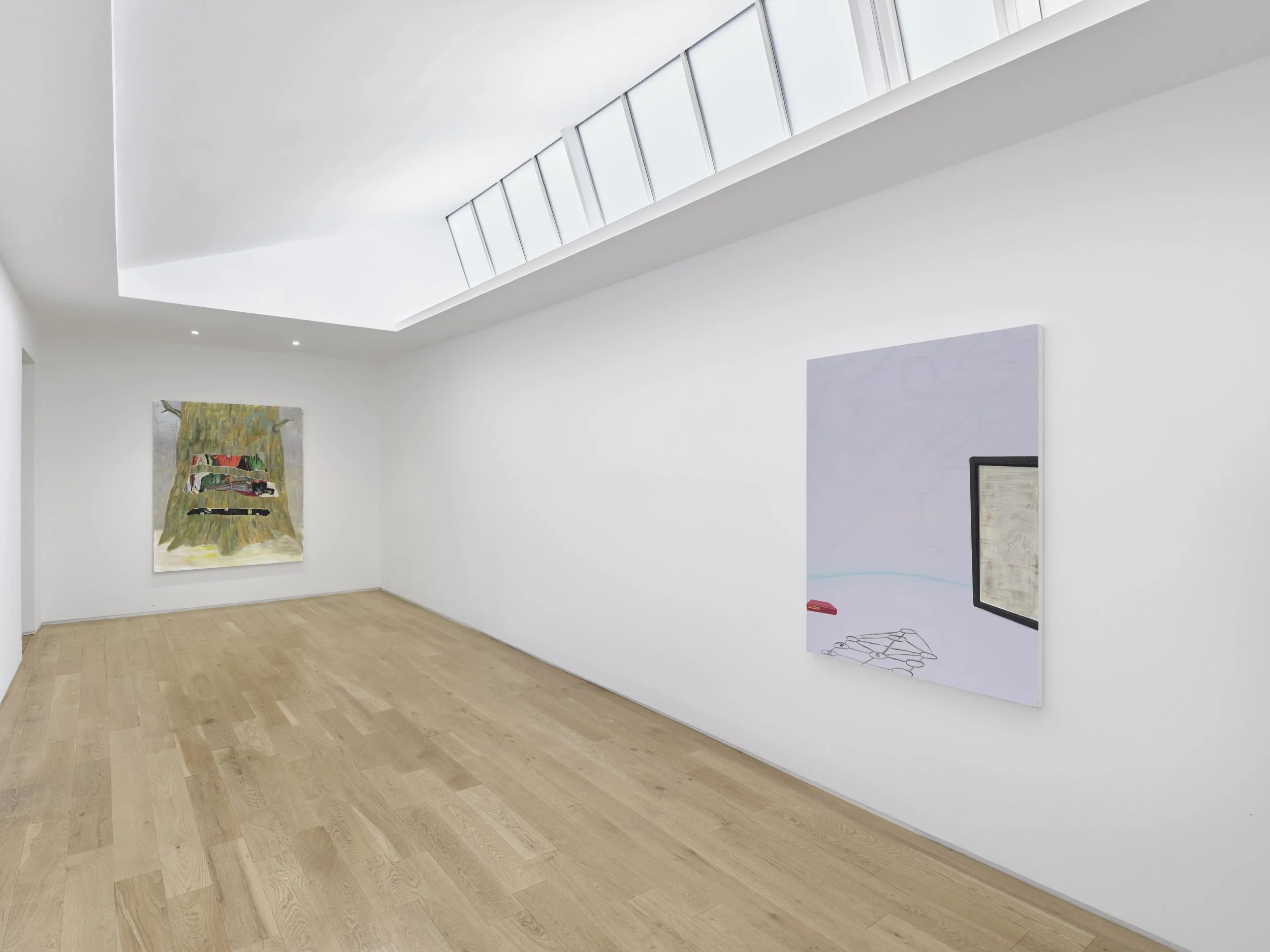Dexter Dalwood: English Painting
P u n k I s D e a d 2023 Oil on canvas 90 x 120 cm 35 3/8 x 47 1/4 in DAL W230004 GBP 60,000
Comprising an imagined portrait of the infamous London punk venue, the Roxy Club, ‘Punk Is Dead’ is a reference to the history of the British music scene and Dalwood’s own history. Dalwood played bass guitar in punk band, The Cortinas, who played at the Roxy alongside The Jam, The Stranglers and Sex Pistols.
Dalwood returns to the pictorial device of a puddle or ellipsis to reflect the façade of the now defunct venue. Speaking on his experience of the 1970s London punk scene the artist describes being “totally caught up in how it broke like a wave over the over-indulgent, and to me addled, British music scene”
.
‘Punk is Dead’ is the melancholic aftermath of this deluge exploring how the Artist’s lived experience has become a fixed moment in history that has been contained to the specific moment in time.
Dexter Dalwood’s inaugural exhibition with Lisson Gallery represents a return to the artist’s homeland and to the subject of what it might mean to be an ‘English’ painter. After an initial period at a residency in Mexico in 2017, Dalwood moved there to live and work fulltime, since 2022. Now, from this relative distance, he has begun to re- consider his attachments with English art history and the culture of his youth, growing up in 1970s and ’80s Britain. The question of whether national identity can be determined or distilled through art is explored in this new group of paintings that consider the legacies of traditional genres, such as landscape or the lowlier practice of horse portraiture, all the way up to twentieth-century movements including the Bloomsbury Group and Pop Art.
Installation View of Dexter Dalwood’s English Painting Centering’ at Lisson, Gallery 67 Lisson Street, London, 27th September – December 14th, 2024 © Dexter Dalwood, Courtesy Lisson Gallery
Dalwood’s complex painterly surfaces blend styles and moments from different eras. His diptych Track and Turf 1754 (all works 2023 or 2024) repeats the date 1754 – when Stubbs began dissecting and painting horses in Lincolnshire – in gold across a coloured ground similar to British racing green, next to a detail of a horse painted by Reynolds (considered the more famous and successful artist). Another date painting, Boleskine House 1973, refers to a property next to Loch Ness in Scotland bought by the lead guitarist of Led Zeppelin, Jimmy Page, who was briefly obsessed by the nefarious activities of its previous owner, the occultist and black magician, Aleister Crowley, although the ghostly visage reflected at the foot of the painting is from a Black Sabbath record, with lead singer Ozzy Osbourne releasing the song ‘Mr Crowley’. Another glimpsed view occurs within a giant tree trunk, titled Avalon, which splits to partially reveal a scene from Arthurian legend painted by Pre-Raphaelite Edward Burne-Jones, also a surprising source of inspiration for rock guitarist Page.
Another absent but important figure in the exhibition is David Bowie, whose presence is merely suggested by the title Languid Ziggy. A red, minimalist backdrop is disturbed by a pair of languorous legs, perhaps hinting to the way in which Bowie has embodied ‘style’, from 19th century dandyism all the way to 20th century fashion as high art. A further moment of modernism interrupted here – in Dalwood’s painting Northern Pop – is the work of Jasper Johns, one of whose famous hatched grey paintings has been usurped by English county names – Yorkshire, Lancashire, Derbyshire – suggesting a humorous swipe at the greyness of the weather, although not everything Johns labelled was quite as it seemed.
R i s e U p 2024 Oil on canvas 201 x 251.5 cm 79 1/8 x 99 in DAL W240001 GBP 120,000
'Rise Up responds to the music culture in both London and Bristol and Dalwood’s personal connection with each location. He was born in the latter but moved to London as a teenager . Dalwood’s painting of a life-size sound system calls to mind the eclectic atmosphere of Notting Hill Carnival, London and St Paul’s Carnival, Bristol. During these events the streets are flooded with people dancing to music from homemade, painted up sound systems much like the one depicted here and celebrating Caribbean culture and diaspora. Formally this composition references the Modernist grid and Peter Halley’s colour palette.
While the links between these paintings are not often immediately evident, among them are hints and clues to wider topics and traits – such as music, mysticism and melancholy – that could all arguably be associated with that intangible term, ‘Englishness’. There are autobiographical nods to the artist’s own musical heritage in images such as Rise Up, a riotously colourful carnival sound system and a clear example of the sample-heavy undertones running through every one of these paintings, as well as in Punk is Dead, recalling the now defunct Roxy Club and Dalwood’s time with Bristol-based punk band The Cortinas.
In addition to upending traditions of painting and reflecting on the status and meaning of cultural moments past, Dalwood also tackles seismic historic monuments and events associated with the heritage of this Sceptred Isle. Bloody Sunday is a numerical panorama that abstracts and honours the 13 civilians killed by British soldiers stationed in Northern Ireland in 1972, while The Blitz makes oblique reference to the removal of paintings from the walls of the National Gallery in expectation of German bombing raids over London in the 1940s.About the artist
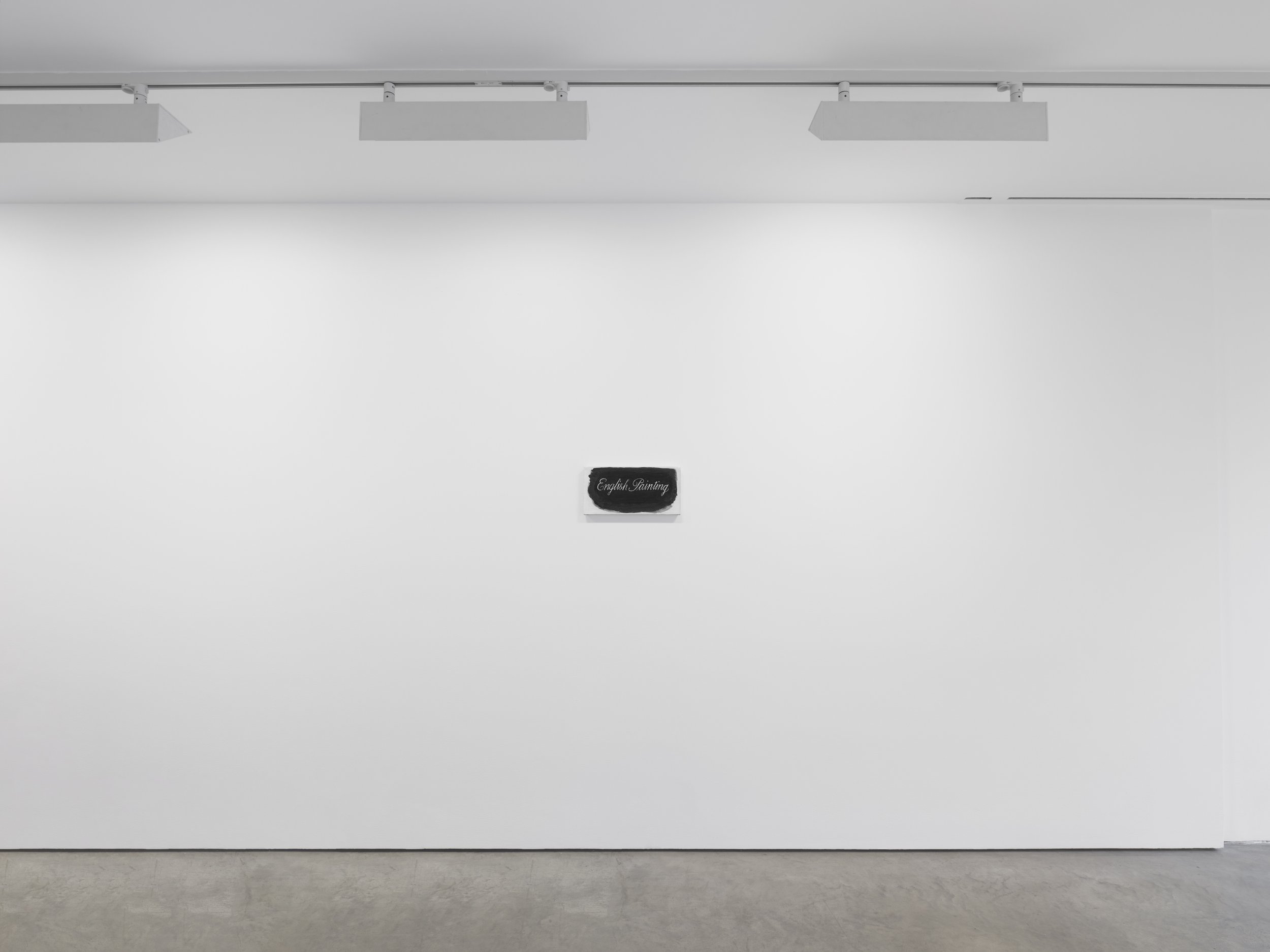
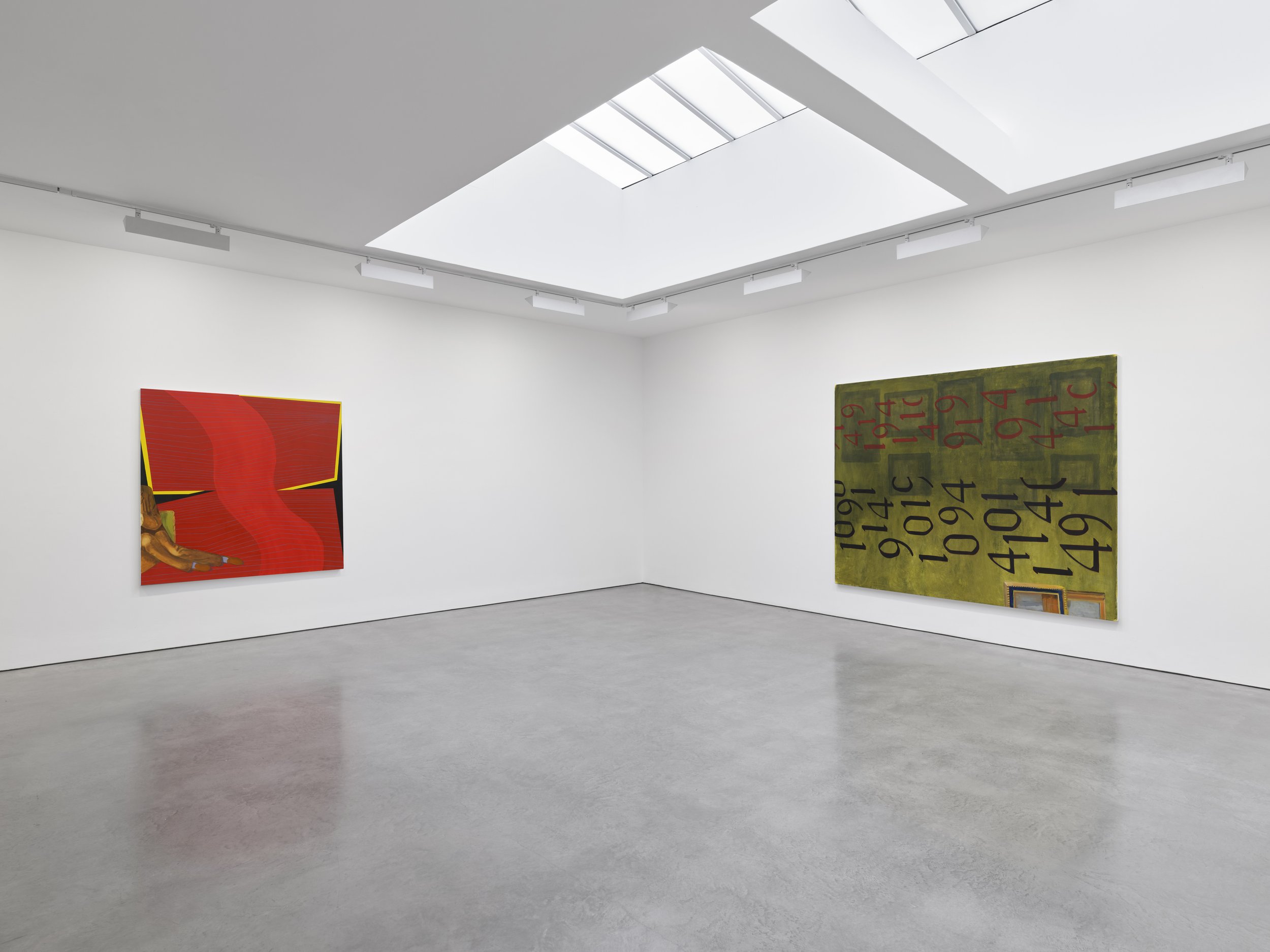
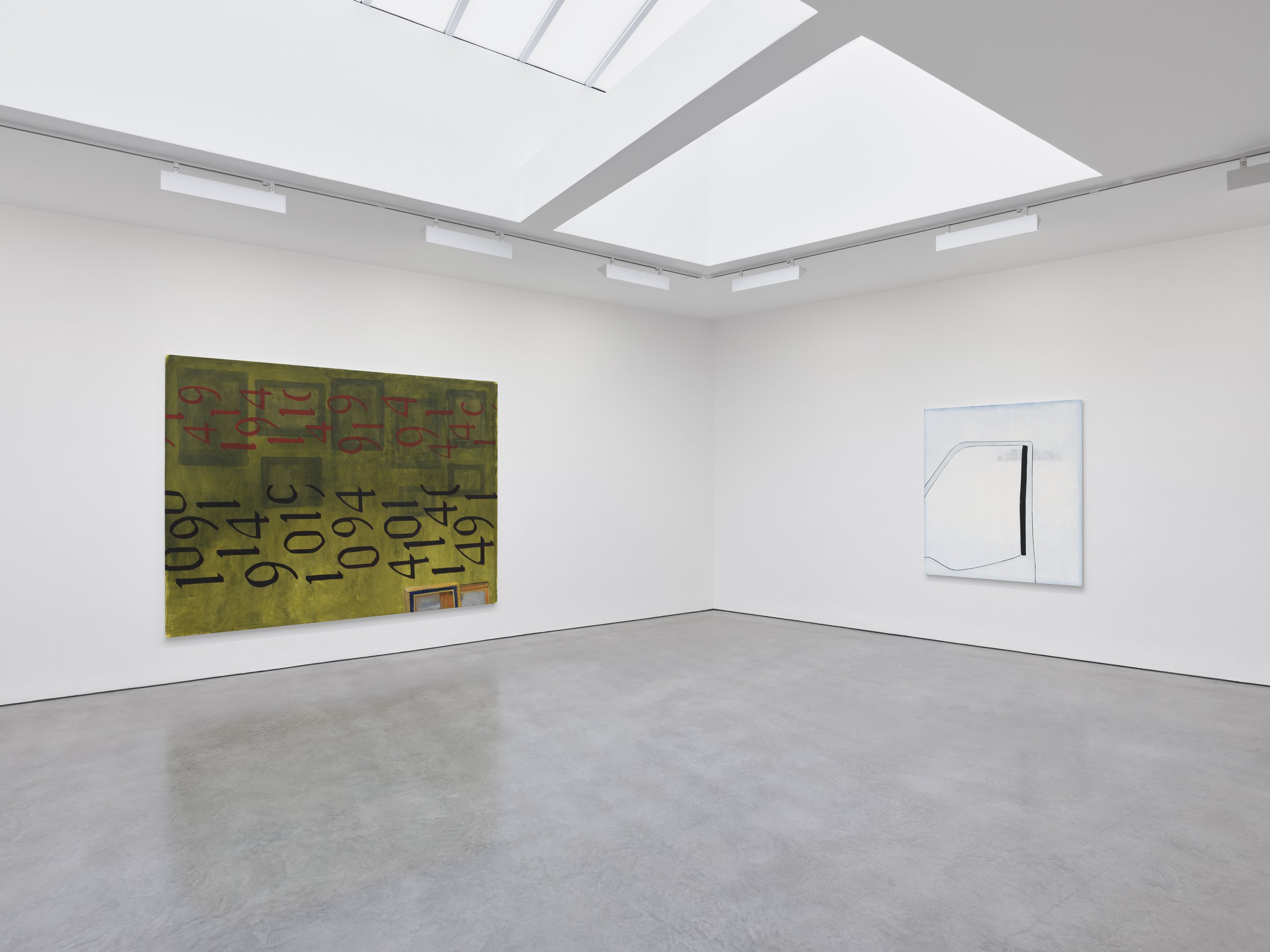
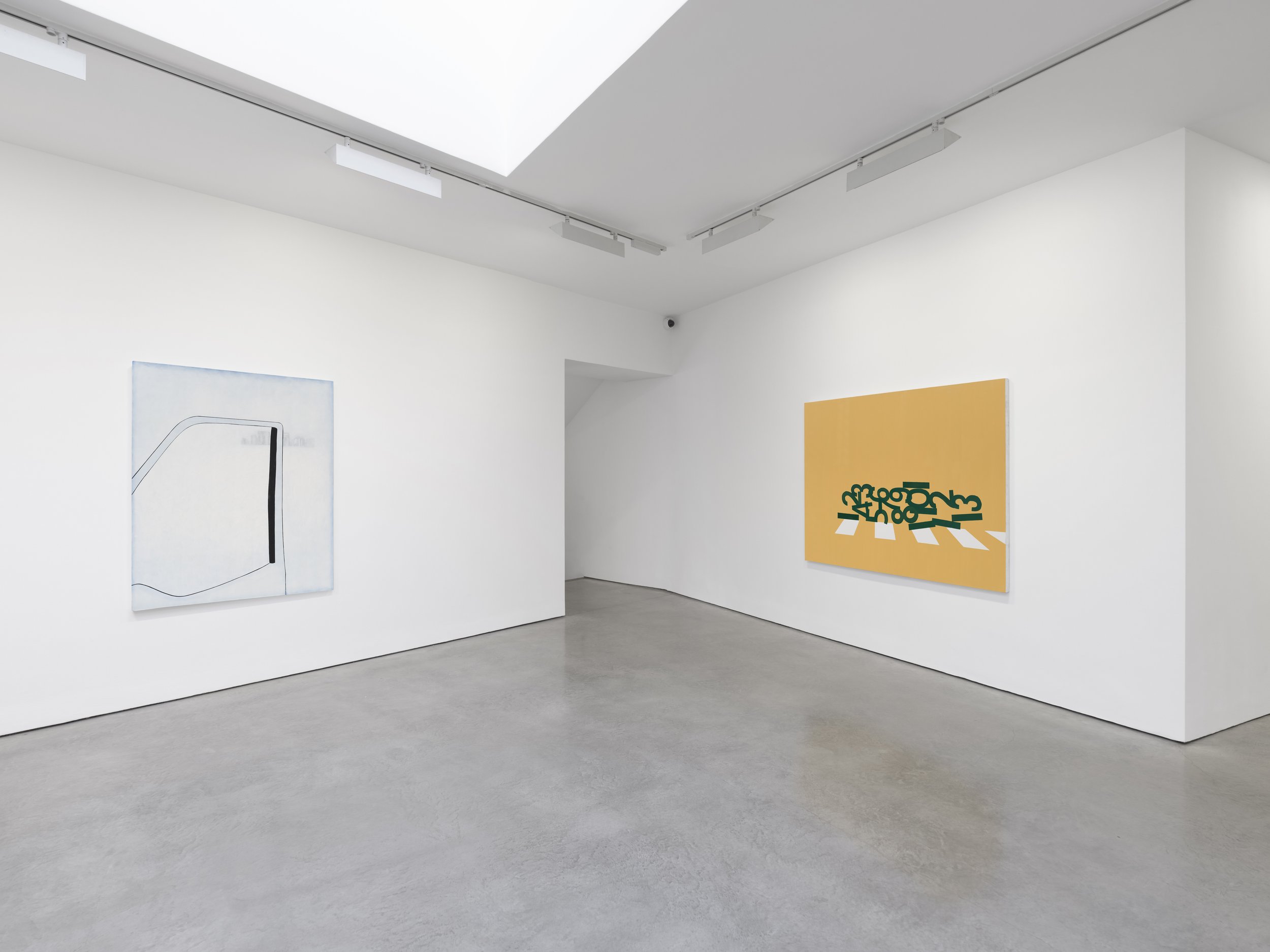
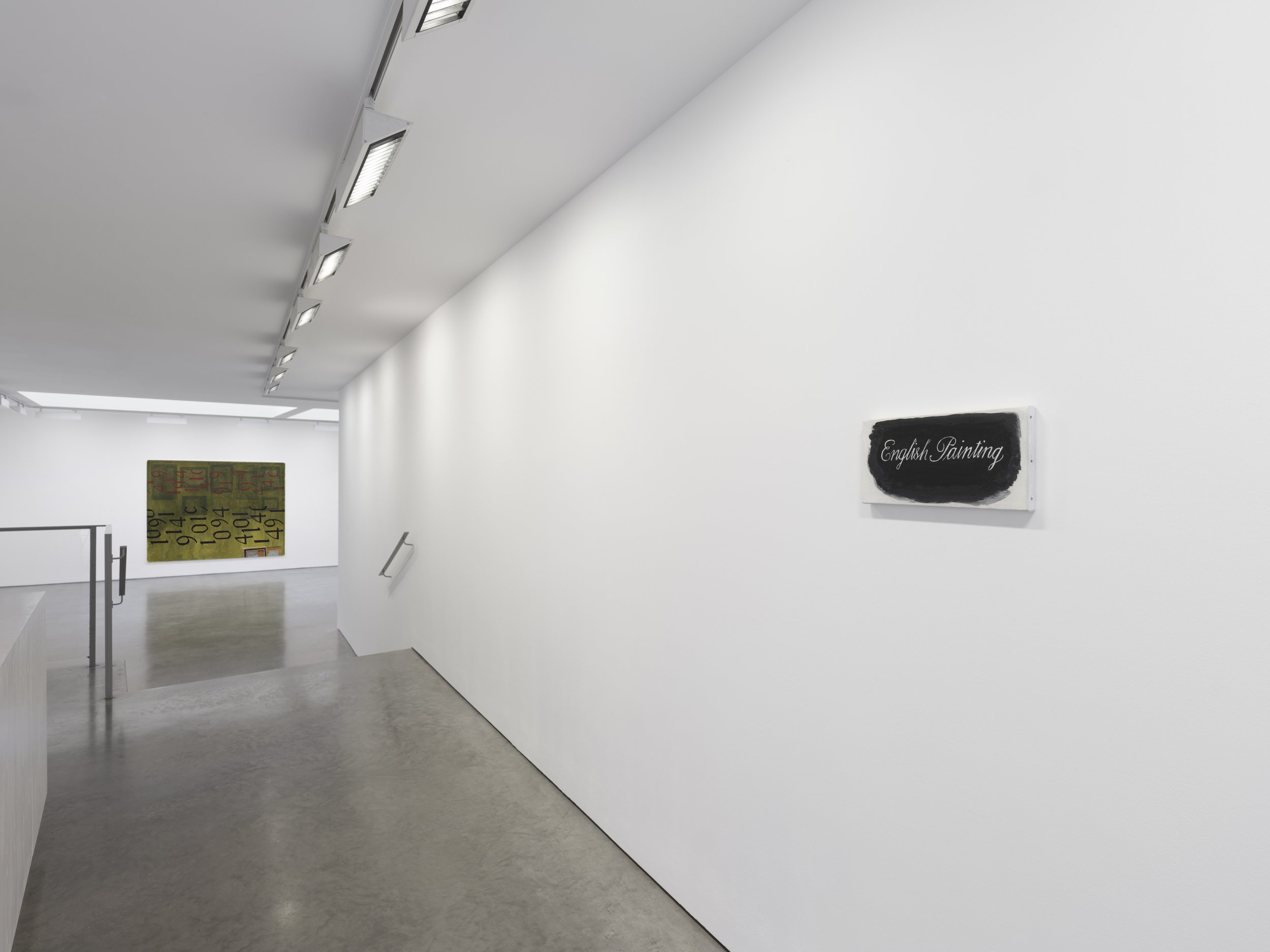
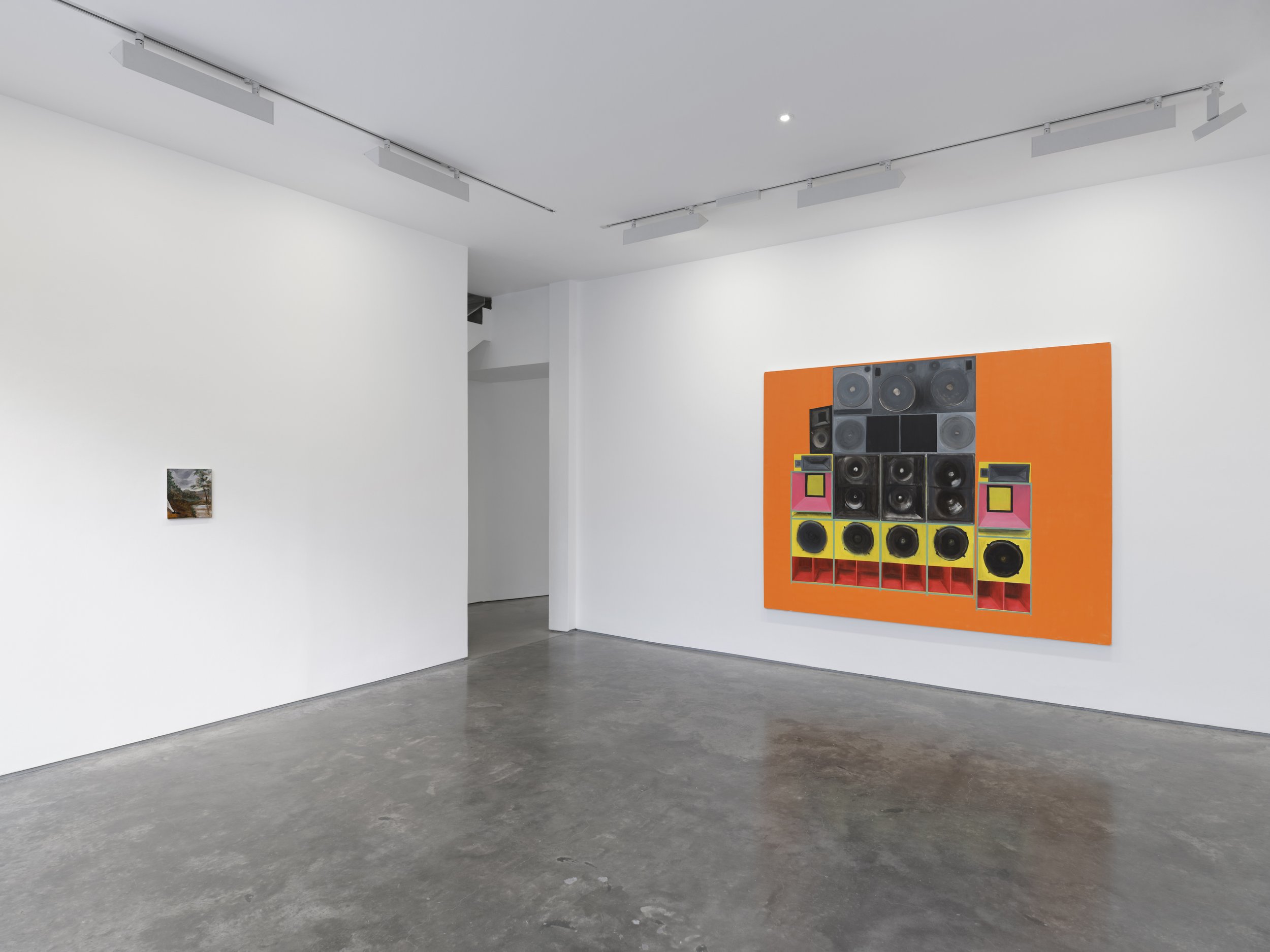
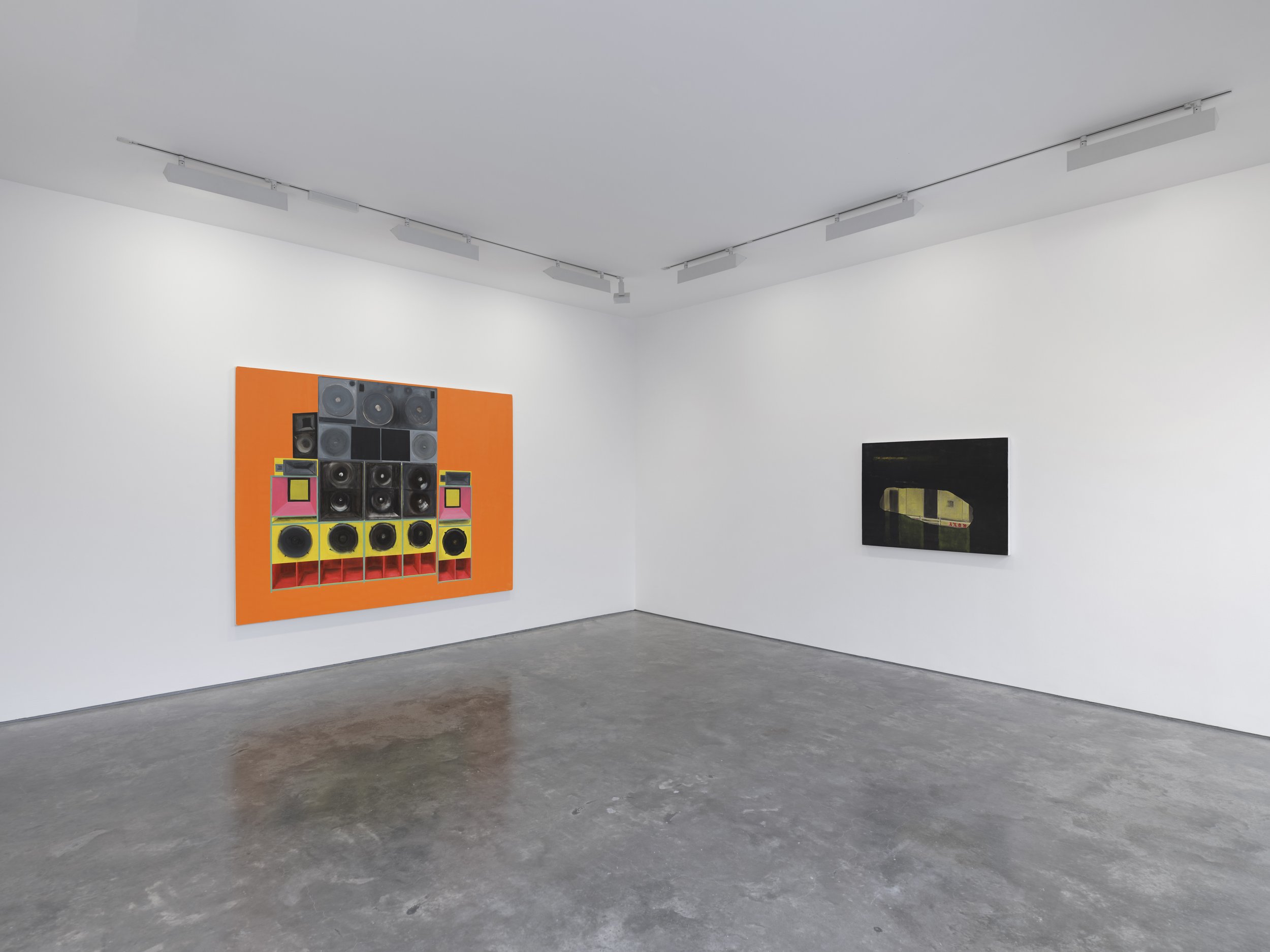
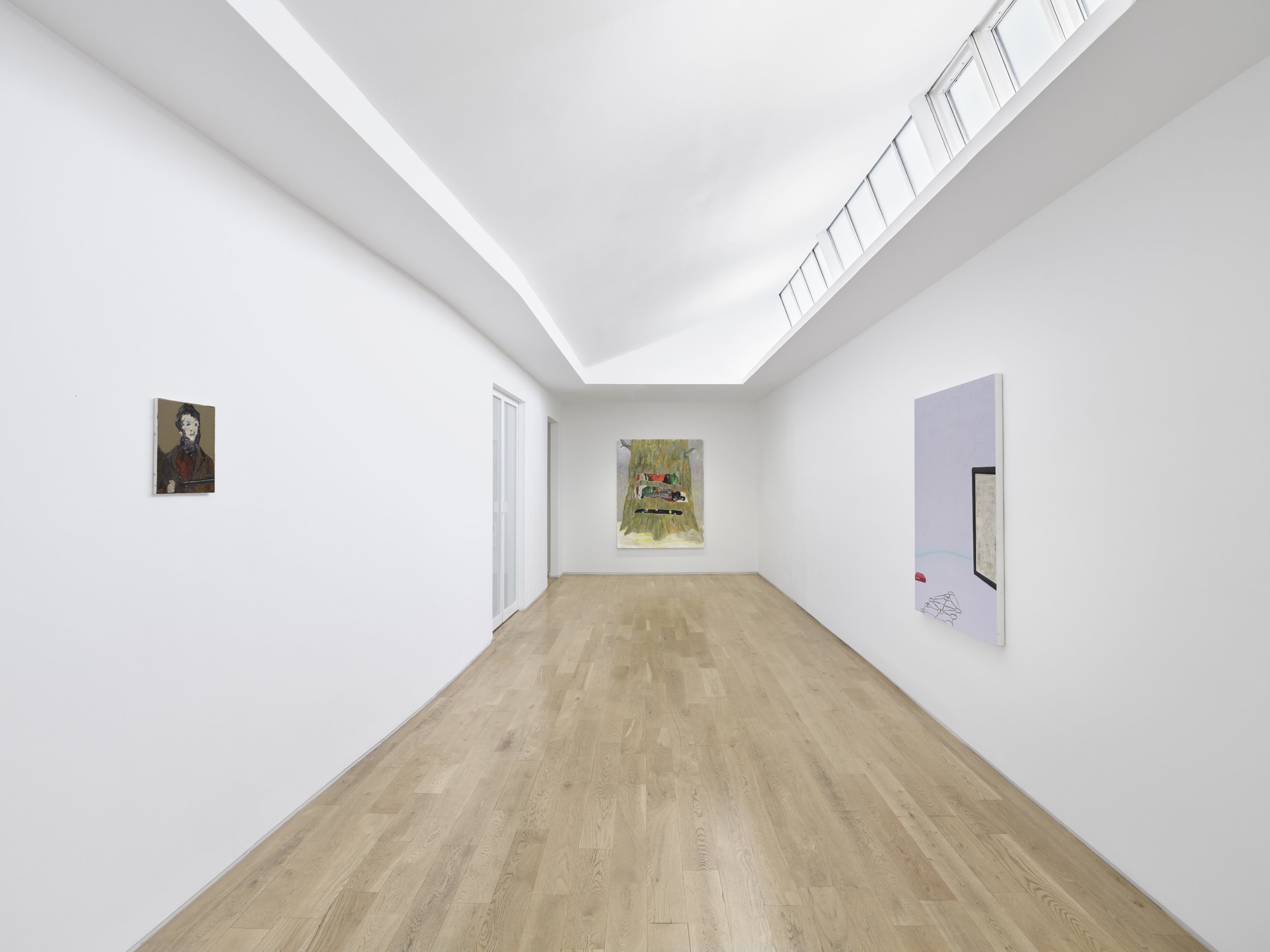

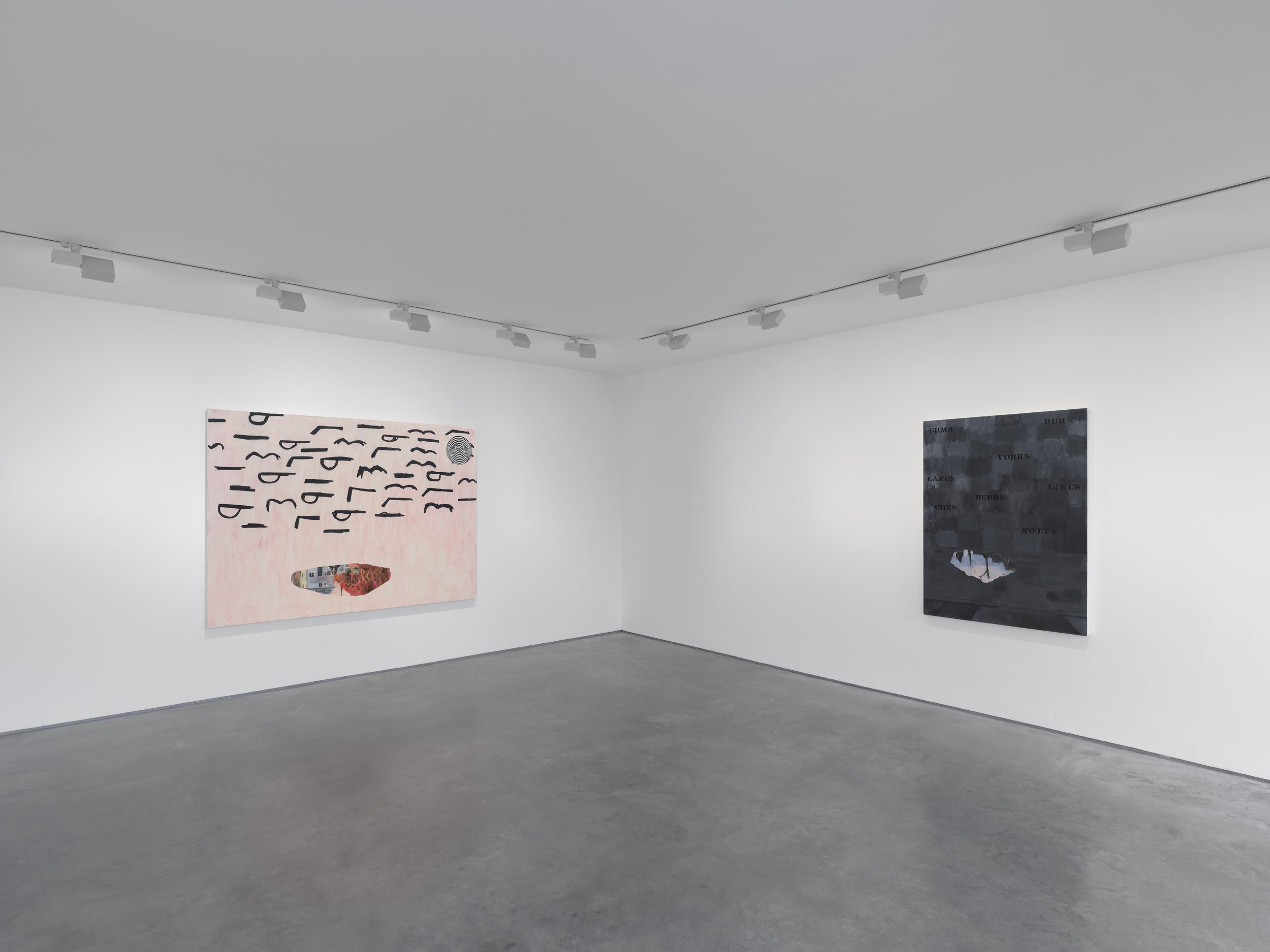
Installation View of Dexter Dalwood’s English Painting Centering’ at Lisson, Gallery 67 Lisson Street, London, 27th September – December 14th, 2024 © Dexter Dalwood, Courtesy Lisson Gallery
An avowed master of contemporary history painting for over three decades, Dexter Dalwood translates real-world events into imagined and composite landscapes, furthering the language and narratives of his chosen medium, while acknowledging the weight of all that has come before. An acute understanding and referencing of past artistic genres has recently given way to a style all his own: one that evades figurative tropes, in favour of uninhabited and uncertain spatial concerns, shifting scales and compressed picture planes. The artist’s famed, fictional interiors of Kurt Cobain’s Greenhouse (2000) or Wittgenstein’s Bathroom (2001), executed with knowing painterly flourishes and references – ranging from Willem de Kooning and Clyfford Still to Manet, Munch and Bellini – have since been concentrated down into constricted views from inside an airplane or else expanded through windows into Dalwoodesque spaces that are at one further remove from any original source material. The increasing presence of textual or numerical impositions on the canvases, in addition to abstract passages of gestural and frontal mark making, likewise signifies a distillation and honing of this practice.
Sites of trauma depicted in earlier works such as Brian Jones' Swimming Pool (2000) and the imagined view out of W.G. Sebald’s wrecked car in The Crash (2008), for example, have been replaced with an unnamed sense of foreboding, perhaps evoked by a still from a 24-hour newsfeed, or by the myriad potentialities of a mirrored puddle or a glimpsed ceiling rose. Dalwood’s fragmentary, sample-heavy aesthetic, which often begins with pencil or cut paper studies, goes far beyond a locus for postmodern quotation and displacement. Instead, his paintings enact a dizzying layering of the thought processes behind painting, on top of the vast back catalogue of art history, added to various ongoing bodies of research, as well as an appreciation of the importance of time and memory as touchstones for creating newly epochal images.
About Artist
Dexter Dalwood (born Bristol, UK, 1960) is based in Mexico City. In 2017 he undertook a residency in Oaxaca and made a series titled An Inadequate Painted History of Mexico on his return to London, which has since featured in the touring show, 'Esto No Me Pertenece' at Centro de las Artes San Agustín, Oaxaca, Mexico and Museo Nacional de Arte (MUNAL), Mexico City, Mexico (2021-22). Dalwood’s other major solo museum shows include: Kunsthaus Centre PasquArt, Biel, Switzerland (2013); CAC Málaga, Spain (2010); FRAC Champagne-Ardennes, Reims, France (2010) and Tate, St. Ives, UK (2010). His work has featured in recent group exhibitions including: ‘The Paradoxes of Internationalism. Part I’, at Museo Tamayo, Mexico City, Mexico (until 1 October, 2023); 'You to Me, Me to You', A4 Arts Foundation, Cape Town, South Africa (until 18 Nov 2023); ‘Modern Media Networks: Painting and Mass Media’, Tate Modern, London, UK (2020); ‘Hello World. Revising a Collection’, Hamburger Bahnhof, Berlin, Germany (2018); ‘Michael Jackson: On the Wall’, National Portrait Gallery, London, UK touring to Grand Palais, Paris, France, Bundeskunsthalle, Bonn, Germany and Espoo Museum of Modern Art, Finland (all 2018-19).
About Lisson Gallery
Lisson Gallery is one of the most influential and longest-running international contemporary art galleries in the world. Today the gallery supports and promotes the work of more than 60 international artists across two spaces in London, two in New York, one in Shanghai and Beijing, as well as a forthcoming gallery in Los Angeles, opening 15 April. Established in 1967 by Nicholas Logsdail, Lisson Gallery pioneered the early careers of important Minimal and Conceptual artists, such as Art & Language, Carl Andre, Daniel Buren, Donald Judd, John Latham, Sol LeWitt, Richard Long and Robert Ryman among many others. It still works with many of these artists as well as others of that generation from Carmen Herrera to the renowned estate of Leon Polk Smith. In its second decade the gallery introduced significant British sculptors to the public for the first time, including Tony Cragg, Richard Deacon, Anish Kapoor, Shirazeh Houshiary and Julian Opie. Since 2000, the gallery has gone on to represent many more leading international artists such as Marina Abramović, Ai Weiwei, John Akomfrah, Susan Hiller, Tatsuo Miyajima and Sean Scully. It is also responsible for raising the international profile of a younger generation of artists led by Cory Arcangel, Ryan Gander, Van Hanos, Hugh Hayden, Haroon Mirza, Laure Prouvost, Pedro Reyes, Wael Shawky and Cheyney Thompson.
Dexter Dalwood’s English Painting Opened on September 27th and will close on December 14th at 67 Lisson Street, London. There was an opening on the 26th of September from 6 – 8pm.
For more information about this exhibition and others, please visit the Lisson Gallery here. The gallery can also be found on Facebook, YouTube, and Instagram.
